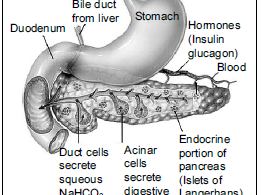
ABSTRACT
Acute renal failure is a common condition, frequently encountered in both community practice and hospital in-patients. While it remains a heterologous condition, following basic principles makes investigation straightforward and initial management follows a standard pathway in most patients. Therapeutic strategies includes search for medicine, and in case of failure of conventional medicine, one has to find out remedies which were rarely indicated yet have been noticed in medical system.
KEYWORDS
Acute renal failure, rare remedies, homoeopathy.
ABBREVIATIONS
Acute renal failure (ARF), blood urea nitrogen (BUN), glomerular filtration rate (GFR)
INTRODUCTION
Acute renal failure (ARF) is a syndrome characterised by rapid decline in glomerular filtration rate(hours to days), retention of nitrogeneous waste products, and perturbation of extracellular fluid volume and electrolyte and acid base homoeostasis.
ARF complicates approximately 5% of hospital admission and upto 30% admission to intensive care units. ARF is usually asymptomatic and diagnosed when biochemical monitoring of hospitalised patients reveals a recent increase in blood urea and creatinine concentrations.1
PATHOGENESIS AND SYMPTOMATOLOGY
- PRE-RENAL AZOTAEMIAAZOTAEMIA/ PRE-RENAL ARF
Decrease in GFR resulting in renal hypoperfusion which lead to retention of BUN and creatinine in blood termed as azotaemiaazotaemia. This is usually not associated with any structural change if renal blood flow is rapidly restored. Decreased in blood flow results in rapid absorption of salt and water. Thus urine osmolarity is increased and hyaline casts are formed. Pari assu low perfusion causes back diffusion of filtered urea from the tubules into the blood giving rise to increase in BUN creatinine ratio more than 20:1.2
symptoms of thirst, orthostatic dizziness and physical evidence of orthostatic hypotension, tachycardia, reduced jugular venous pressure, decreased skin turgor, dry mucous membrane and reduced axillary sweating seen in the patient .1
- INTRINSIC RENAL AZOTAEMIAAZOTAEMIA/ INTRINSIC RENAL ARF
Most intrinsic renal ARF is triggered by ischaemia or nephrotoxins, insults that classically induce acute tubular necrosis.2
Symptomatology in this stage includes flank pain experienced by the patient due to occlusion of renal artery or vein or the stretching of renal capsule along with oliguria, oedema, hypertension, and an active urine sediment. Urine analysis reveals proteinuria, haematuria,presence of muddy brown granular or tubular epithelial cell casts. Development of sub-cutaneous nodules, livido reticularis, bright orange retinal arteriolar plaques, and digital ischaemia are encountered.1
- POST RENAL AZOTAEMIAAZOTAEMIA/ POST RENAL ARF
This stage usually indicates obstructive uropathy with cause of obstruction below the bladder. Symptomatology include suprapubic and flank pain radiating to the groin suggests acute ureteric obstruction. Presence of nocturia, frequency, and hesitancy, anuria, sometimes polyuria, haematuria and pyuria.1
HOMOEOPATHIC APPROACH
Homoeopathy carrying the holistic concept doesn’t recognise renal failure as merely a disease related to the kidney alone but always consider something prior to this sickness that is to say the morbid affection of life/vital force, the suffering of the dynamis; or the life principle of the organism due to which individual as a whole suffers. His suffering is made known to us through different perceptible sign and symptoms (characteristic symptom) which constitute not only the sole guide to the choice of the curative remedy, but also to be removed for effecting a cure. They represent “what is curable in disease.”7
But sometimes, it is very difficult to find individual single remedy which can cover the totality, due to paucity of characteristic symptoms or due to severe suppression of the disease or due to advanced pathological changes in the body. Hence, in this situation, one has to prescribe a medicine based on the present signs and symptoms and this is the condition where rare homoeopathic medicine has its important role to play which clears the pictures of disease and provides fastest possible recovery.
HOMOEOPATHIC RARE REMEDIES WITH THEIR INDICATIONS (3,4,5,6)
Ampelopsis quinquefolia
Effective remedy for high level of creatinine in blood, associated with uremia or uremic coma. Vomiting, purging, tenesmus, cold sweat, and collapse are the leading symptom of this remedy. It is indicated in cases of renal dropsy which resist other remedies.
Aralia hispida
A valuable diuretics. Useful in dropsy of the cavities due to renal diseases with constipation. Found to be effective for high level of creatinine. Scanty urine or complete suppression of urine. It is generally indicated in cases of urinary troubles which are associated with dropsy.
Apocyanum cannabinum
It is indicated in dropsy in renal disease with thirst. Ascites, anasarca in nephropathy.
Ammonium benzoicum
A remedy for albuminaria especially with patient of gouty diathesis. Smoky and scanty urine. Albuminous with large deposits and soreness in the region of kidney.
Alfalfa
It has pronounced urinary action. Kidneys inactive; frequent urging to micturate.
it increases elimination of urea, indicans and phosphates.
Argentum phosphoricum
An excellent diuretic in renal dropsy.
Asparagus officinalis
Its marked and immediate action on the urine secretion is well known. Weakness with dropsy. Mucus and pus in urine with much tenesmus; peculiar odor.
Balsamum peruvianum
Urine scanty with lots of mucoid sediment.
Baryta muriaticum
It is indicated in organic lesion of aged who are dwarfish, both mentally and physically. Great increase in uric acid, diminution of chlorides in urine.
Brachyglottis repens
Kidney and bladder symptoms predominant with fluttering sensation.. Bright’s disease. Albuminaria. Sense of swashing in the bladder. Urine contains mucus, corpuscles, epithelium, albumen, and casts.
Boerhaavia diffusa
It has marked diuretic properties. Urine is scanty,& high colored.
Cahinca
The remedy has been found useful in dropsical affection. Its urinary symptoms are well marked. Albuminaria with dyspnoea on lying down at night. Ascites anasarca with dry skin. Urine fiery. Pain in the region of kidney; better by lying bent backward with general fatigue.
Calcarea arsenicosa
Nephritis with great sensitiveness in kidney region. Kidney region very sensitive to pressure. Albuminaria; passes urine every hour. Dropsy. Complaints of drunkards after abstaining.
Cannabis sativa
It affects the urinary organs specially. Urine retained, with obstinate constipation. Painful urging. Zig-zag pain in the urethra. urethra very sensitive, walks with legs apart.
Cantharis vesicatoria
It has excellent action on genitourinary organ. Kidney region is very sensitive to the slightest touch and pressure. Pressing, pricking and congestive pain during acute nephritis. Nephritis with haematuria. Violent paroxysm with cutting and burning in the entire renal region with painful urging to micturate; bloody urine passes in drops. Urine with membranous scales looking like bran in water. Urine jelly-like shreddy.
Carbolicum acidum
It is a powerful irritant, a languid, foul, painless, destructive remedy. Putrid discharges in case of nephritis with marked tendency of tissue destruction. Urine almost black.
Chimaphila umbellata
Acts principally on the kidneys and genitourinary tract. Scanty urine loaded with ropy, mucopurulent sediment. Urine turbid, offensive, containing ropy or bloody mucus and depositing a copious sediment. Must strain before a flow comes. Fluttering in the region of kidney. Unable to micturate without standing with feet wide apart and body inclined forward.
Chininum sulphuricum
Indicated in chronic interstitial nephritis. Bloody urine with turbid, slimy, clay coloured, greasy sediment. Small amount of urea and phosphoric acid with excess of uric acid and abundance of chlorides accompanied by subnormal temperature. Albuminaria.
Coccus cacti
Spasmodic pain in kidneys with visceral tenesmus. Anuria, anasarca and ascites. Brick red sediment in urine; urates and uric acid. Lancinating pain from kidney to the bladder. Deep colour , thick urine. < left side, touch, pressure of clothing. >walking
Copaiva officinalis
It has powerful action on the mucous membrane of urinary tract. Burning, pressure and painful micturition with dribbling. Retention of urine with pain in bladder, anus and rectum. Urine smells of violets. Greenish, turbid colour with peculiar pungent odour.
Cuprum arsenicosum
A remedy for symptoms depending on deficient renal affection. useful in nephritis of pregnancy. Indicated in uraemic convulsion. Renal inefficiency and uraemia. Garlicky odour of urine. Urine with high specific gravity; increased acetones and diacetic acid.
Echinacea angustifolia
Remarkable medicine as a “corrector of blood dyscrasia.” Foul discharges with emaciation and debility. Septicaemia. Kidney is involved with passage of albuminous, scanty, frequent and involuntary urine.
Eryngium aquaticum
Congestion of the kidneys with a dull pain in the back, running down the ureters and limbs. Uridrosis, sweat with urinous odor which is due to presence of urea in sweat indicating the chronic renal failure.
Eucalyptus globulus
An efficient diphoretic. Acute nephritis complicating influenza. Haematuria with suppurative inflammation of kidney. Urine contains pus and is deficient in urea. Sensation of loss of expulsive force in the bladder. Act as diuretics.
Euonymus atropurpurea
Distress in renal region. Albuminaria. Urine scanty, high colored; acidity increased. Dull pain in the lumbar region better by lying down.
Eupatorium purpureum
Excellent medicine in renal dropsy. Albuminaria, strangury with irritable bladder. Deep, dull pain in the kidneys. Insufficient flow. Milky urine. Constant desire; bladder feels dull. Weight and heaviness in the loin and back.
Ferrum iodatum
Indicated in acute nephritis following eruptive diseases. Urine dark and sweet smelling. Crawling sensation in the urethra and rectum. Body emaciated and debility with anaemia.
Ferrum muriaticum
It is indicated in chronic interstitial nephritis. Bright crystal in urine.
Formica rufa
It is useful medicine in nephritis. Urine is bloody, albuminous with much urging. Large quantities of urates.
Formicicum acidicum
It has marked diuretic effect. Induces greater elimination of product of disassimilation, particularly urea. Sub-acute and chronic nephritis.
Fuchsinum magenta
Important medicine where cortical substances of kidney degenerated. Efficacy is seen in cortical nephritis with albuminaria. Deep, red urine and albuminous.
Jaborandi
It is of efficient service in renal disease, especially with uraemia, eliminating both water and urea. Dropsy after scarlatina. Urine scanty with pain over pubes with much urging. Contraindicated in post-puerperal uraemia and in senile cases. Very efficient diaphoretic.
Juniperus communis
Dropsy with suppression of urine. Catarrhal inflammation of kidneys. Old people with poor digestion and scanty secretion of urine. Scanty, bloody urine with violets’ odour. sensation of weight in the kidney. Renal hyperaemia.
Kali chloricum
Acts very destructively upon the kidneys, producing croupous nephritis, haemoglobinuria, etc. Useful in parenchymatous nephritis with stomatitis. Also indicated in uraemia during pregnancy. Urine albuminous, dark, suppressed presence of nucleo-albumin and bile, high phosphoric acid, with low total solids. Act as diuretics.
Liatris spicata
A prompt diuretic. Used in renal dropsy. Suppressed micturition is most favourable indication. General anasarca due to renal diseases.
Lonicera xylosteum
It is important medicine used in uremic convulsion due to accumulation of of high level of toxins in blood.
Mercurius corrosivus
It has destructive action on the secreting portion of kidneys hence used successively in severe case of nephritis where damage is much more. Brights disease. Urine hot, burning, scanty, suppressed, bloody, albuminous with characteristic tenesmus. Albuminuria in early pregnancy.
Mercurius cyanatus
Useful medicine in acute nephritis. Dysuria with scanty and amber colour urine. Nephritis with great debility and chilliness. Suppression of urine.
Methylene blue
Indicated in acute parenchymatous nephritis. Post scarlatinal nephritis. Urine acquires a green color. Surgical condition of kidney with a large amount of pus in the urine.
Morphinum
Paresis of the bladder. Slow and difficult micturition. Uremia, acute and chronic. Aching across the lumbosacral region; cannot walk erect. Tongue very dry, brown violent in the middle.
Natrium hypochlorosum
Indicated in diffuse nephritis. Dark urine with albumin and cast. Severe pain across the lumbosacral region.
Ocimum canum
Very efficacious medicine in kidney diseases. Red sand in urine is its chief characteristic and frequently verified. Renal colic especially of right side. High acidic urine, formation of spike crystals of uric acid. Thick, turbid, purulent, bloody. Brick dust red or yellow sediment. Odor of musk in urine.
Oxydendron abroreum
Aremedy for dropsy; ascites and anasarca. Urine suppressed. Bright’s disease.
Phlorizinum
It compels the secretory epithelium of the kidney to break down serum albumin into sugar.
Radium bromatum
Indicated in renal irritation, albuminaria, granular, and hyaline casts. Increased elimination of solids, particularly of chlorides. Nephritis with rheumatic symptoms.
Senecio aureus
Urinary organs affected in marked degree. Violent backache with congested kidney. Scanty, high colored, bloody with profuse mucus and tenesmus. Great heat and constant urging. Nephritis. Irritable bladder of children with headache (minimal change nephritis).
Senega
Urine greatly diminished; loaded with shreds and mucus; scalding before and after micturition. Back bursting distending pain in kidney region (nephritis).
Senna
Where the system is broken down, bowel constipated, muscular weakness, and waste of nitrogenous materials, senna will act as tonic. Oxaluria, with excess of urea; increased specific gravity. Hyperazoturia, phosphaturia, and acetonuria.
Serum anguillae
The presence of albumin and renal elements in urine, hemoglobinuria, prolonged anuria (24 and 26 hours). Whenever kidney is acutely affected, either from cold, intoxication or infection and resulting in oliguria, anuria, and albuminuria. Eminently efficacious to re-establish diuresis, and it rapidly arrest albuminuria. Hypertension and oliguria without oedema.
Solidago virgaurea
Kidneys sensitive to pressure. Difficult and scanty urine, reddish brown, thick sediment. Albuminuria, haematuria. Pain in kidneys extend forward to the abdomen and bladder. Offensive urine. Sometimes makes the use of catheter unnecessary. Backache due to renal congestion. Bright’s disease.
Stigmata maydis
Uric and phosphatic diathesis. Marked oedema of the lower extremities and scanty micturition. Suppression and retention of urine. Nephritic colic; blood and red sand in urine. Tenesmus after micturating.
Sumbulus moschatus
Important medicine where oily pellicle present on the surface of urine which indicates high amount of ketone bodies in urine. Hence, indicated in renal failure of uncontrolled diabetics patient.
Terebinthiniae oleum
It is very efficacious remedy in nephritis following any acute disease. Urine suppressed, scanty, odour of violets. Burning pain in the region of kidneys. Drawing pain in the right kidney extending to the hip. Bright’s disease preceded by dropsy.
Uranium nitricum
It is important medicine in nephritis and renal failure due to uncontrolled diabetes. Great emaciation, debility and a tendency to ascites with general dropsy. Act as diuretic.
Urea
A hydrogogue diuretic in the treatment of dropsies. Renal dropsy with symptoms of general intoxication. Albuminuria, diabetes; uraemia. Urine thin and of low specific gravity.
Zingiber officinale
Complete cessation of renal function. Complete suppression after typhoid. Albuminuria. Urine thick, turbid, with strong odour. After micturating, continues to ooze in drops.
DISCUSSION AND CONCLUSION
Although our vast materia medica is full of rare remedies but still these are infrequently used remedies in prescriptions by homoeopathic physicians. But when we are not getting the clear picture of disease due to extensive pathology involved or application of individual medicine is not possible due to paucity of symptoms, these rare medicines are of much importance. This literature review was undertaken with an aim to highlight the uses of rare remedies in the treatment of acute renal failure which are beautifully described in materia medica but due to lack of awareness these are infrequently or rarely appearing on the pen of homoeopathic physician.
REFERENCES
- Harrison, T. R. Harrison’s Principles Of Internal Medicine. 16th edition. Mc Graw-Hill Medical Publishing Division; 2005.
- Das, P. C., Das, P. K., Text book of Medicine. 5th edition. Kolkata: Current Books International; 2009.
- Boericke, W. New Manual of Homoeopathic Materia Medica with Repertory. 3rd edition. New Delhi: B.JainPuublishers(P) Ltd.; 2014.
- Clarke, J. H. A Dictionary of Practical Materia Medica. New Delhi: B. Jain Publishers(P) Ltd.; 2014.
- Pulford, A. Homoeopathic Materia Medica of Graphic Drug Pictures. 1st edition. New Delhi: B.JainPuublishers(P) Ltd.; 2002
- Herring, C.The Guiding Symptoms of Our Materia Medica. 1st edition. New Delhi: B. Jain Publishers(P) Ltd.; 2009.
- Kent, J. T. Lectures on homoeopathic philosophy. 9th edition. New Delhi: B. Jain Publishers(P) Ltd.; 2011.
About Author:
Dr Priyanka Bharti, PGT,
R.B.T.S. Govt. Hom. Med.
College & Hospital, Bihar





